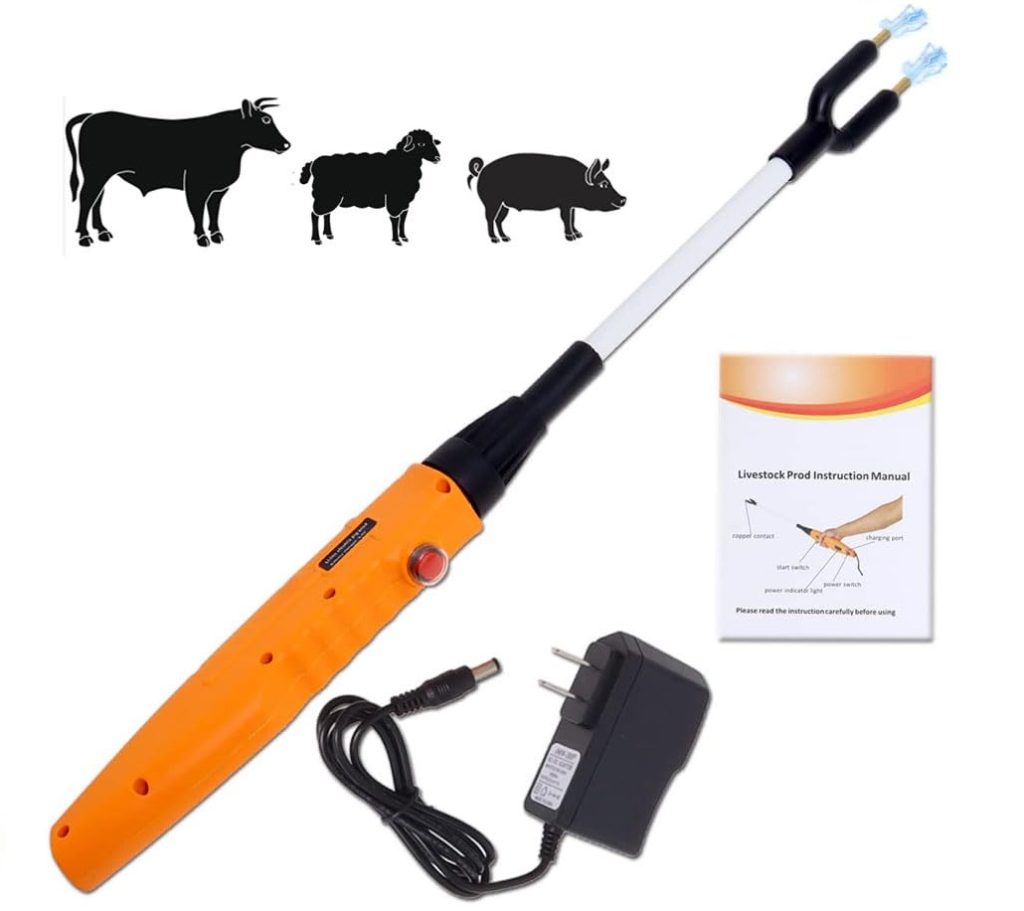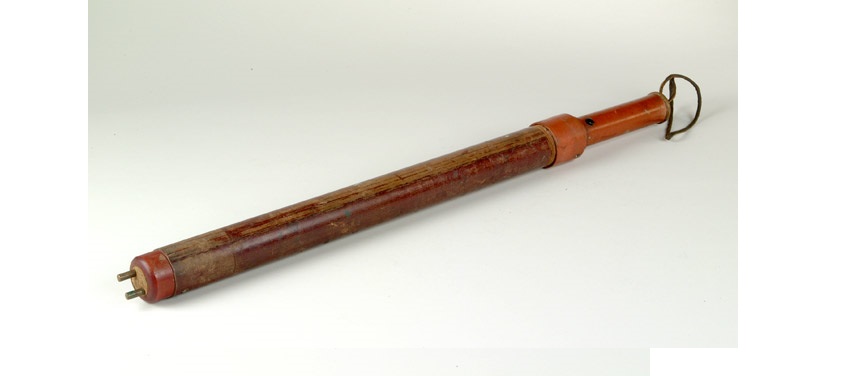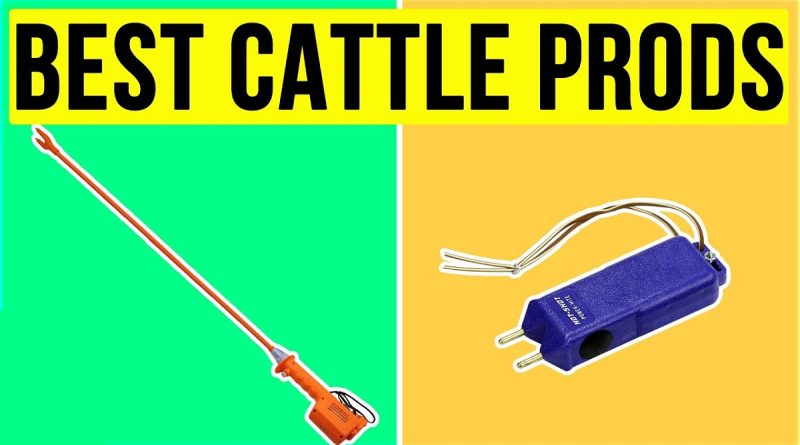How to Choose the Best Cattle Prod for Your Herd
A cattle prod is a tool used in livestock management to provide gentle encouragement or correction to cattle. It is designed to be held and operated by a human handler. The prod delivers a mild electric shock or physical stimulus to the animal, prompting it to move in the desired direction. Cattle prods play a crucial role in effective herding and ensuring the safety of both the animals and the handlers.
Types of Cattle Prods
There are two main types of cattle prods: electric cattle prods and non-electric cattle prods.
Electric Cattle Prods
Electric cattle prods operate by delivering a low-voltage electric shock to the animal upon contact. These prods are powered by batteries and have built-in circuitry to regulate the intensity of the shock.

How Electric Cattle Prods Function?
Electric cattle prods work by completing an electrical circuit between the prod and the animal’s body. When the prod comes into contact with the animal, it delivers a short, harmless electric shock that stimulates the animal’s nervous system and encourages movement.
Pros and Cons of Electric Cattle Prod
Electric cattle prods have several advantages. They are effective in motivating cattle to move, especially in situations where individual animals are unresponsive or stubborn. Electric prods also offer longer reach and can be used from a safe distance, reducing the risk of injury to the handler. However, these prods may cause discomfort to the animals if used improperly or excessively.
Safety Tips for Electric Prods Usage
When using electric cattle prods, it is important to prioritize the safety and well-being of the animals. Handlers should avoid using excessive force or prolonged shocks. It is advisable to touch the animal’s hindquarters or the fat areas of the body rather than sensitive areas. Additionally, electric prods should always be stored safely and handled responsibly to prevent accidental discharge.
Non-electric Cattle Prod
Non-electric cattle prods are designed to provide physical stimuli rather than electric shocks. They are typically made of lightweight and durable materials such as fiberglass or plastic.

Understanding Non-electric Options
Non-electric cattle prods rely on physical contact with the animal to induce movement. They feature flexible and non-conductive shafts that can be tapped or gently pressed against the animal’s body.
Advantages and Disadvantages of Non-electric Prods
Non-electric cattle prods offer a more gentle approach to herding. They are less likely to cause discomfort or distress to the animals and are considered a more humane option. However, their effectiveness may vary depending on the temperament and responsiveness of the animals. Non-electric prods also require closer proximity to the animal, which can increase the risk of accidental contact or injury to the handler.
Appropriate Situations to Consider Non-electric Prods
Non-electric cattle prods are particularly suitable for herding docile or well-trained cattle. They can be used in situations where animals are more responsive to tactile stimuli and do not require the intensity of an electric shock.
Factors to Consider When Choosing a C Prod
When choosing a cattle prod, several factors should be taken into consideration to ensure it meets the specific needs of your herd.
Herd Size and Breed
The size of your herd and the breed of cattle you are handling are crucial factors in selecting the right cattle prod. Larger herds may require prods with longer handles and more robust construction to withstand extended use.
Herd Temperaments and Behavioral Patterns
Understanding the temperament and behavioral patterns of your herd is essential. Some cattle may be more easily motivated by a gentle stimulus, while others may require stronger encouragement. Choosing a prod that matches the temperament of your animals will enhance effectiveness.
Safety and Ease of Use
Safety should always be a top priority. Select a prod that is ergonomically designed for easy handling and provides a secure grip to prevent slippage during use. Some prods also come with safety features such as automatic shut-off mechanisms or insulated handles to minimize the risk of accidental shocks.
Legal Requirements and Regulations
Before purchasing a cattle prod, it is important to research and understand any legal requirements or regulations pertaining to the use of such tools in your area. Compliance with local laws will ensure that you are using the prod responsibly and ethically.
Budgetary Considerations
Consider your budget when selecting a cattle prod. Electric prods tend to be more expensive due to their advanced features, while non-electric prods are generally more affordable. Assessing the long-term value and durability of the prod will help in making an informed decision.
Evaluating the Cattle Prod Models
A. Examining Electric Cattle Prods in Detail
Electric cattle prods vary in design and functionality. When evaluating different models, consider the following features:
Voltage and Power Output
The voltage and power output of the prod determine the intensity of the electric shock delivered. Opt for a prod with adjustable settings to cater to the specific needs of your herd.
Handle Length and Grip Comfort
The handle length should be appropriate for your height and reach, allowing you to maintain a comfortable and secure grip. Consider models with anti-slip handles or ergonomic designs to minimize hand fatigue during extended use.
Battery Life and Rechargeability
Check the battery life of the prod and ensure it meets your requirements. Some models offer rechargeable batteries, which can be more cost-effective and environmentally friendly in the long run.
Durability and Quality Construction
A durable and well-constructed cattle prod will withstand the rigors of livestock management without frequent repairs or replacements. Look for models made from sturdy materials such as stainless steel or reinforced plastic.
Innovative Features and Extra Attachments
Some electric cattle prods come with additional features such as LED lights for better visibility or built-in audio cues to complement the electric shock. Consider these innovative features based on your specific needs and preferences.
B. Understanding Non-electric Cattle Prod Options
When evaluating non-electric cattle prods, focus on the following aspects:
Materials and Construction Quality
Choose a non-electric prod made from high-quality materials such as fiberglass or reinforced plastic. These materials offer durability and flexibility, ensuring the prod can withstand repeated use.
Length and Weight Considerations
Non-electric prods come in various lengths, ranging from short batons to longer poles. Also consider the size of your herd and the proximity at which you need to handle the animals to determine the ideal length and weight for your requirements.
Design Features for Optimal Handling
Look for non-electric prods with ergonomically designed handles for comfortable and secure gripping. Some models feature non-slip grips or textured shafts to enhance control and handling efficiency.
Safety Mechanisms and Reliability
Although non-electric prods do not deliver an electric shock, safety mechanisms such as retractable or capped tips can further minimize accidental injuries to the cattle or handler. Choose a reliable prod that ensures consistent results.
C. Exploring Hybrid Cattle Prods
Hybrid cattle prods combine the benefits of both electric and non-electric prods. They offer versatility and are designed to cater to a wide range of herding needs.
Hybrid Prod Features and Benefits
Hybrid prods typically feature an electric shock function along with the physical stimulus of traditional non-electric prods. This combination also allows handlers to modulate the level of stimulation based on the specific temperament of the animals.
Comparing Hybrid Prods with Electric and Non-electric Options
Hybrid cattle prods provide a flexible approach to herding, bridging the gap between the electric and non-electric options. They offer the convenience of electric shocks along with the tactile feedback provided by non-electric prods, making them suitable for a variety of herding situations.
Limitations and Possible Trade-offs
While hybrid prods provide the advantage of versatility, they may have certain limitations. Some handlers may find it challenging to switch between the electric and non-electric modes, requiring additional training and coordination.
Safety Guidelines for Using Cattle Prod
A. Ensuring Animal Welfare and Minimal Discomfort
When using a cattle prod, it is essential to prioritize the welfare of the animals and ensure minimal discomfort. Follow these guidelines:
Proper Technique and Target Areas
Use the cattle prod in a manner that promotes movement without causing harm. Apply gentle taps or light pressure on the appropriate target areas, such as the hindquarters, shoulders, or sides of the animal, to encourage forward movement.
Avoiding Excessive Force or Abuse
Avoid using excessive force or prolonged shocks, as this can cause unnecessary distress or injury to the animal. The goal is to gently motivate the animals, not to harm or cause undue stress.
Health Implications for Cattle
Continuous or harsh use of cattle prods can lead to stress-related health issues in cattle. Over-stimulated animals may experience elevated heart rates, increased cortisol levels, or even injuries. Always use the cattle prod judiciously and with utmost care for the well-being of the animals.
Minimizing Stress and Trauma
Take measures to minimize stress and trauma during herding. Reduce loud noises, keep handling calm and controlled, and provide ample rest and water breaks for the animals. These steps also contribute to a calmer and less stressful herding experience for both the cattle and the handlers.
B. Personal Safety Tips for Handlers
Handlers must also prioritize their personal safety when using cattle prods. Follow these guidelines:
Protective Gear and Clothing
Wear appropriate protective gear such as gloves, boots, and clothing that provides coverage and minimizes the risk of injury from accidental animal contact or falls.
Correct Handling and Storing Procedures
Always handle the cattle prod responsibly and avoid pointing it towards yourself or others. Further, store the prod in a safe place, away from children or unauthorized individuals, to prevent accidents or misuse.
Maintaining Prods in Good Condition
Regularly inspect and maintain the cattle prod to ensure it is in good working condition. Also check for any signs of damage or wear and promptly replace any worn-out parts or batteries.
Training and Communication in Team Settings
In team herding settings, clear communication and synchronized handling of the prods are essential. Ensure all handlers are trained in the proper use of the prod and communicate effectively to ensure smooth and safe herding operations.
C. Legal Obligations and Regulations
It is crucial to comply with local laws and regulations when using cattle prods. Consider the following:
Understanding Local Laws and Livestock Regulations
Research and understand the specific laws and regulations pertaining to the use of cattle prods in your area. Be knowledgeable about any restrictions, permits, or licenses required for legal usage.
Compliance with Animal Welfare Codes
Adhere to established animal welfare codes and guidelines to ensure the ethical treatment of the animals. Respect the boundaries set forth by these codes to promote responsible herding practices.
Licensing and Permits for Cattle Prod Use
If necessary, ensure that you possess the required licenses or permits for the use of cattle prods. Stay updated with any renewals or additional requirements imposed by regulatory agencies.
Frequently Asked Questions (FAQs)
A. Can cattle prod harm or injure cattle permanently?
When used correctly, cattle prods should not cause permanent harm or injuries to the cattle. However, prolonged or excessive use can result in stress, discomfort, or minor injuries. It is crucial to prioritize proper technique and adhere to safety guidelines to minimize any potential negative impacts on the animals.
B. How long should a cattle prod last before needing a replacement?
The lifespan of a cattle prod depends on various factors such as usage frequency, quality of construction, and maintenance. With proper care and regular maintenance, a well-constructed cattle prod can last for several years. However, it is recommended to periodically evaluate the condition of the prod and replace it if there are signs of wear or damage.
C. Are there alternatives to using cattle prods for herding?
Yes, there are alternatives to using cattle prods for herding. These also include the use of trained dogs, horses, or low-stress herding techniques that rely on better understanding and communication with the animals. The suitability of these alternatives may depend on the specific needs of the herd and the skillset of the handlers.
D. What safety certifications should one look for when purchasing a cattle prod?
When purchasing a cattle prod, consider looking for safety certifications such as CE (Conformité Européene) or UL (Underwriters Laboratories) labels. These certifications ensure that the prod complies with relevant safety standards and has undergone thorough testing for electrical and mechanical safety.
E. Is there any specific maintenance requirements for electric cattle prod?
To maintain an electric cattle prod, regularly inspect and clean the prod to remove dirt, debris, or any potential corrosion. Check the battery life and replace batteries as needed. Follow the manufacturer’s instructions regarding maintenance and storage practices to prolong the prod’s lifespan and ensure its optimal performance.
Summary
Choosing the right cattle prod is crucial for effective livestock management. Also understanding the purpose and various types of cattle prods allows handlers to make informed decisions. Factors such as herd size, breed, temperaments, safety considerations, legal requirements, and budget need to be carefully considered. Evaluating cattle prod models involves assessing different features and functionalities specific to electric, non-electric, and hybrid prods. Safety guidelines for using cattle prods emphasize animal welfare, minimal discomfort, and personal safety precautions. Complying with legal obligations and regulations ensures responsible and ethical herding practices. Frequently asked questions address common concerns and provide additional insights for cattle prod users. By following these guidelines and considering the specific needs of your herd, you can choose the best cattle prod that meets your requirements, enhances herding efficiency, and promotes animal well-being.
For more related topics, visit Technology section here.




